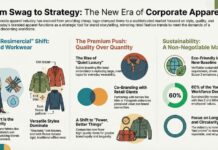According to Earnest, consumer spending at clothing and accessories stores in the United States experienced a year-over-year (YoY) decline of 3.9% from January 1 to March 23, 2025. This sector has become the least successful major retail category this year, underscoring the ongoing challenges faced by discretionary spending. The US declining clothing spending trends have become a significant point of concern for retailers.
Preliminary data for March indicates a slowdown in growth compared to February, influenced by the leap year in 2024. The figures from March 1 to 23 reveal the weakest monthly performance since November 2024, based on Earnest’s analysis of debit and credit card transactions.
The slowdown is primarily linked to a decrease in the growth of credit card spending. Over the past year, debit card transactions have consistently outperformed credit card spending, highlighting a trend where younger consumers have been pivotal in driving growth in the clothing and accessories market.
In the first 23 days of March 2025, the average transaction size at clothing and accessories stores was $122. This average basket size has been on a downward trajectory YoY since December 2024. Although March’s figures show a continued decline from February, they reflect an improvement compared to more significant declines seen in early 2024.
Earnest’s panel data on spending at clothing stores aligns with the US Census Bureau’s Monthly Retail Trade Survey (MRTS) for clothing and accessory trends, boasting a correlation of 0.72 since January 2018. As of March 23, Earnest’s panel indicated a 5.3% YoY decrease, compared to a 4% decline in February 2025, adjusted for the leap year. This suggests a sustained organic deceleration in the monthly retail trade survey results reported by the Census Bureau, illustrating the US declining clothing spending trends.
Transactions at clothing and accessory stores exhibit a contrasting trend to other categories regarding growth by payment method. So far in March, the average debit card transaction size increased by 1.2% YoY, while credit card transactions fell by 2.1%, demonstrating a significant divergence.
Consumer spending in clothing and accessories showed the most robust growth in Hawaii, Louisiana, and Ohio, while Alaska, South Dakota, and the District of Columbia reported the slowest growth rates. Nevertheless, overall clothing spending declined in most states.



































